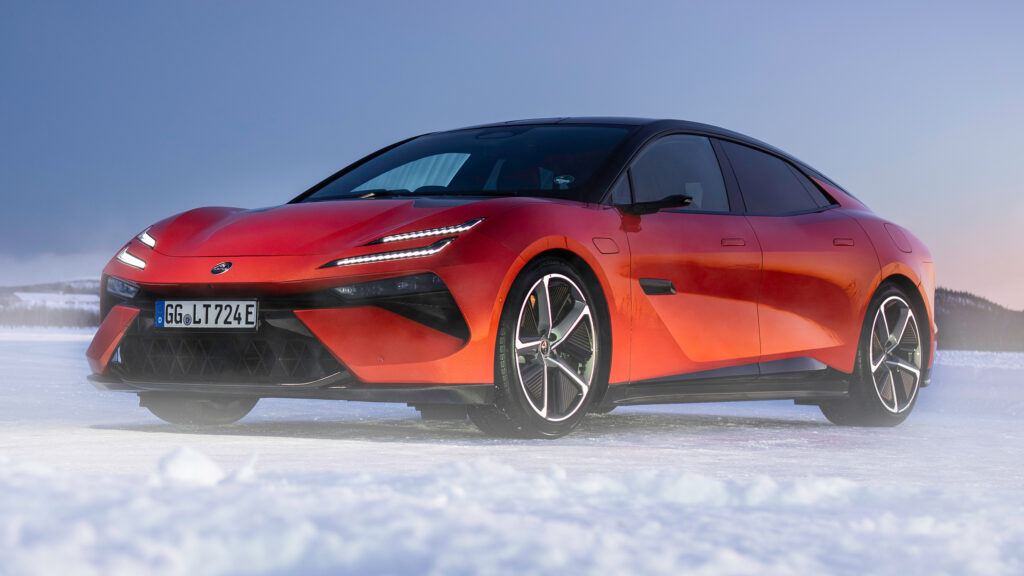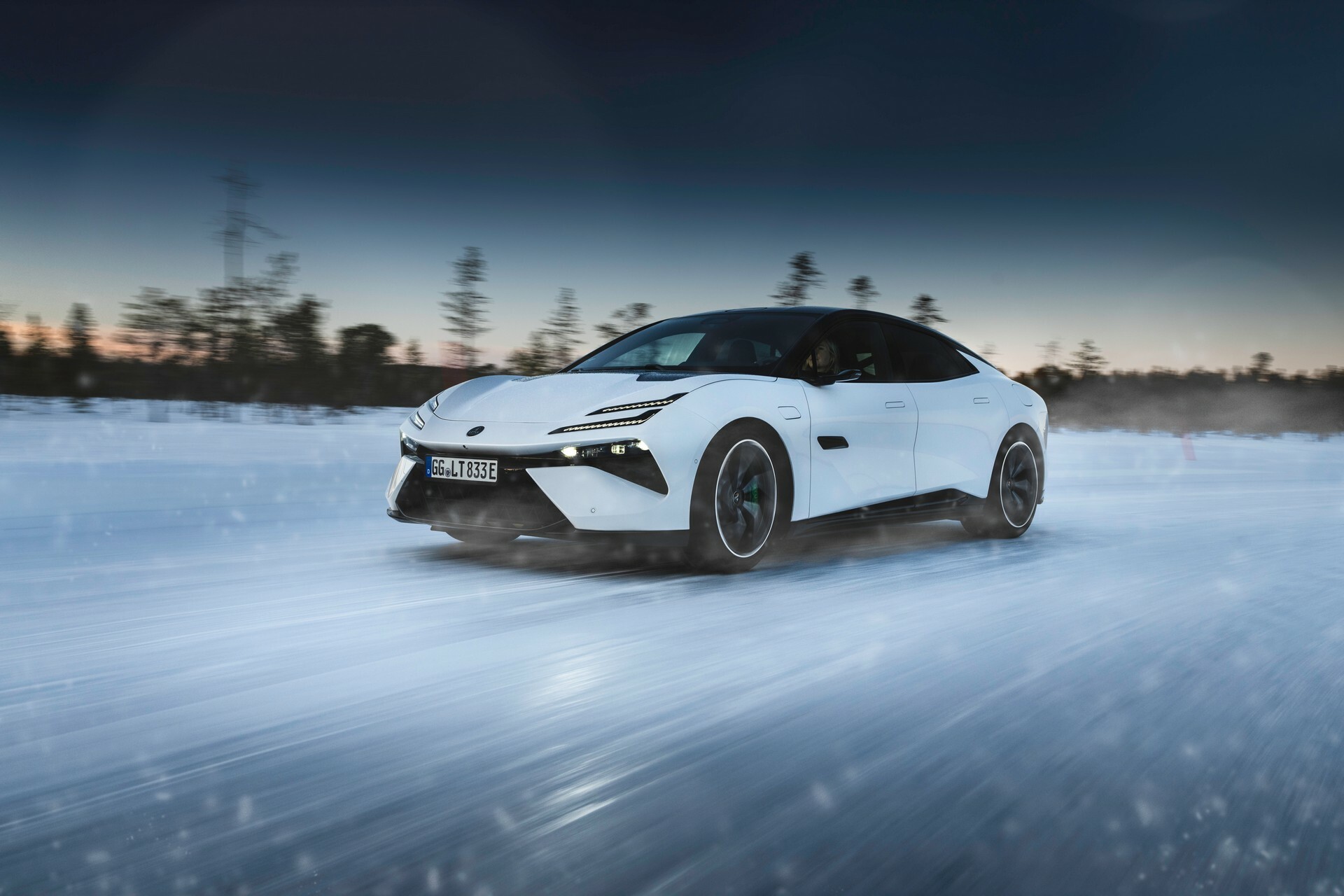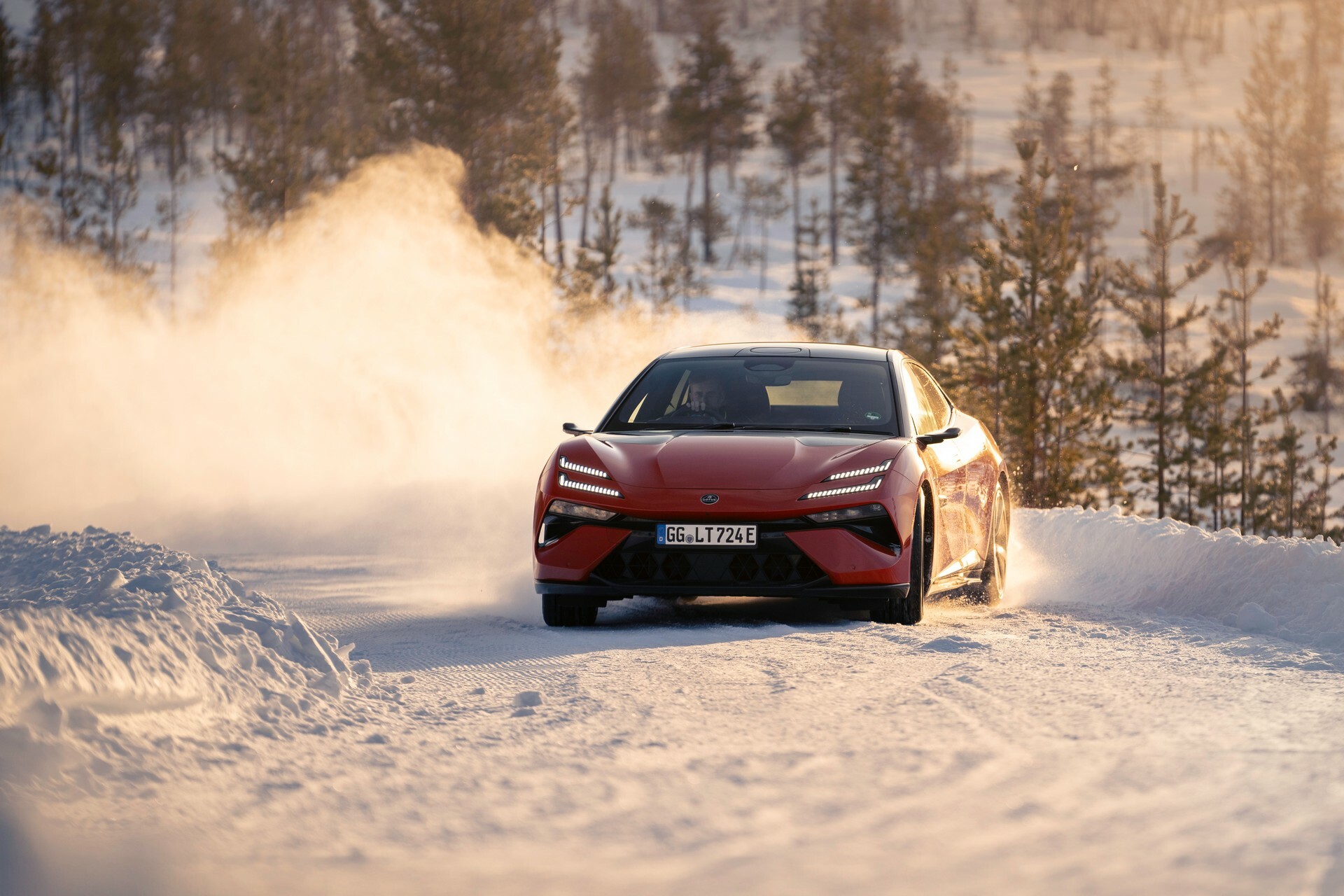After spending three years trekking across 15 countries and two continents, Lotus has finished the testing and development program of the all-electric Emeya sedan.
The Emeya follows in the footsteps of the Eletre SUV as the brand’s second battery-electric vehicle and was most recently taken to the Arctic Circle in Ivalo, Finland for a grueling test regime that saw temperatures drop to as low as -25 degrees Celsius (-13 Fahrenheit). While in Finland, Lotus’s engineers focused on fine-tuning the suspension, steering, brakes, and traction and stability control systems.
In addition, work was done on the bespoke winter tires the Emeya will be available with and Lotus notes it has engineered the driver assistance functions to remain functional despite road markings and signs being obscured by things like snow. It also put the EV into a so-called automotive ‘freezer’ that allowed it to drop the temperatures down to -40 degrees Celsius (-40 Fahrenheit).
Read: Lotus Tech Secures $870 Million Investment Before It Goes Public On The Nasdaq
Throughout the past three years, the testing regime for the Emeya has seen it take to the B-roads of the UK, the German Autobahn, and mountain passes in Mongolia. It has also been tested at the Nurburgring Nordschleife and the Nardo proving ground.
“The testing process at Lotus is rigorous and covers a comprehensive performance assessment of everything from suspension and steering through to battery and tires,” region vehicle line director for the Emeya, Sylvain Verstaeten, said. “Emeya is the ultimate all-electric grand tourer, designed and engineered to deliver the optimum driving experience for our customers 365 days a year and in all conditions. We’re incredibly excited for customers to be able to experience Emeya for themselves.”
While the global testing regime for the Emeya has wrapped up, Lotus will conduct additional local testing in the Middle East, the U.S., and Australia before deliveries start in these markets.
Powering the Emeya are a pair of electric motors combining to produce up to 905 hp and 726 lb-ft (985 Nm) of torque, allowing it to hit 62 mph (100 km/h) in 2.78 seconds and power through to 165 mph (265 km/h). Providing the motors with their juice is a 102 kWh battery back.
























